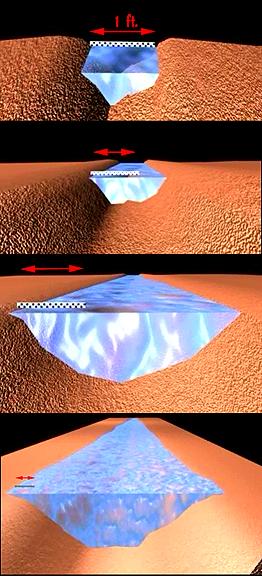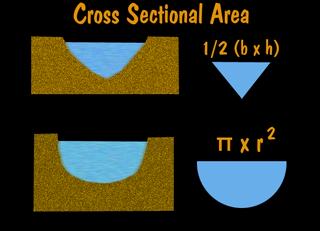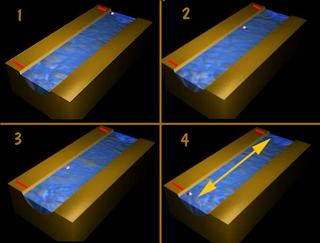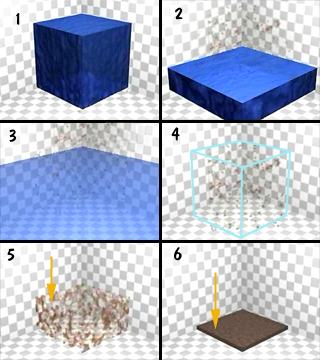
A stream is a body of water that flows downslope and in a well defined channel. A channel is the passageway the stream creates. The load is the material that is carried by the stream.
The discharge is actually a rate (something measured divided by time) at which the stream moves by a fixed point.
1.) provide water
2.) carry waste (a past sin - slowly changing)
3.) provide transportation
4.) provide easy to build sites with good soil
5.) provide recreation areas
6.) carry sediment to the ocean
7.) carry weathering chemicals to the sea
8.) change the shape of the land
9.) provide fresh water to he ocean
The bottom four are all part of geology and the rock cycle.
A stream channel is a dynamic thing that changes according to the weather, and the load.
The cross section of a stream is simply a cut taken perpendicular to the flow direction and across the stream.
Typically small streams are often about as deep as they are wide. The cross section (profile) naturally changes downstream as the quantity of water increases. The stream will usually broaden more than deepen.
Probably the most important property of a stream is the gradient. The gradient is the vertical fall divided by the distance. The gradient tends to be higher at the beginning of a stream and lower toward the end.
The longer a stream is, the less likely it is to have uniform gradient. Stream gradient can be effected by the stream crossing different strata, or when a stream must cut through old blockage. (Landslide)
1.) Gradient = meters per kilometers
(height/distance)
The higher the gradient, the larger the downhill vector pulling at the ball (or water.)

2.) Cross Section Area = width X average depth
(square meters)
Their (the book) equation is based on a rectangle.
Other equally good equations might be based on the shape of the actual stream.

3.) Average Velocity = meters per second
(speed of water)
Drop a ball in the water and measure the number of seconds it takes to move a fixed distance down stream.
The distance divided by the time is the average velocity of the stream. (pix 1-4)

(volume of water)

5.) Load = kilograms per cubic meter
(weight per volume)
Take a cubic meter of water, drain out the water, and the remainder is the material being carried by the water, compact the material, and you have the suspended load.
| NEXT | TOC | PREV |